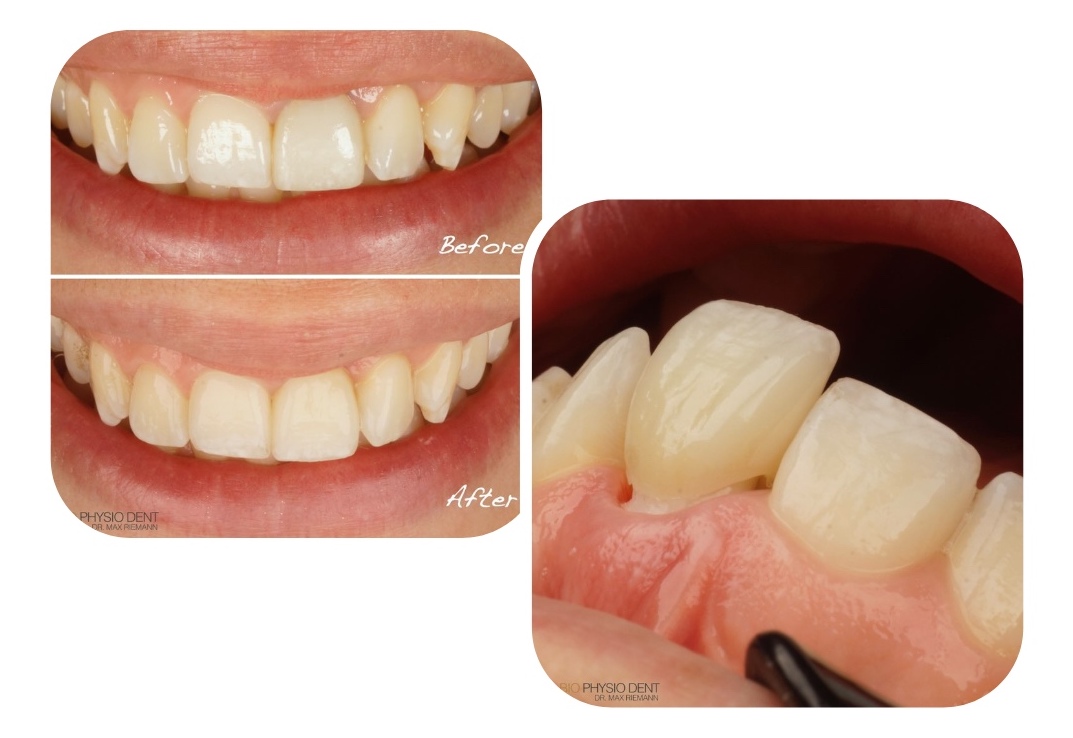Anterior tooth restoration with Zeramex XT – case report by Dr. Max Riemann
The loss of an anterior tooth can be very painful for patients. An implant-supported all-ceramic restoration (ATZ zirconium dioxide) can be a long-term functional, highly aesthetic and biocompatible tooth replacement solution. Two-piece zirconia implants are becoming the focus of clinical application due to their biological and material properties. No metallic corrosion, less plaque accumulation and better biological compatibility of zirconia compared to titanium make ceramic implants a preferred treatment method for patients.
This case report shows selected steps in the immediate implant placement and prosthetic restoration of the Zeramex XT implant in regio 21. The surgery and treatment were performed by Dr. Max Riemann.
Initial situation
The patient complained of an apical cyst and pain in region 21. After the relevant examination and information about possible treatment methods and implant material, the patient opted for immediate implantation of a ceramic implant (Zeramex XT) and an all-ceramic restoration.
Surgical phase
After atraumatic extraction of tooth 21, implant placement of Zeramex XT RB 4.2 x 12 mm was performed in compliance with the drilling protocol. The insertion depth of the implant is possible between 1.6 and 0.6 mm supracrestally. A connective tissue graft and allogeneic bone graft material were used to close the gap.
Prosthetic phase
After the immediate implant placement, an immediate provisional was placed. The soft tissue was shaped for 4 months with the help of a long-term provisional. Subsequently, an impression was taken with an individualised impression post. A customised abutment and a definitive ceramic crown were fabricated for the prosthetic restoration. This was then occlusally screwed into the mouth with the Vicarbo screw at the prescribed torque of 25 Ncm.

Scientific findings
The literature shows clear advantages of zirconium dioxide implants. For example, the high-performance ceramic exhibits less plaque accumulation as well as less bacterial adhesion (Scarano et al. 2004; Ichikawa et al. 1992) and a lower thickness of the deposited biofilm (Roehling et al. 2016). Circular blood flow to the surrounding soft tissue is more similar to that of the natural tooth for zirconia ceramics and significantly reduced for titanium (Kajiwara et al. 2015). Better circular blood flow means a healthier gingiva, which not only results in better aesthetic outcomes (Tartsch 2018). Peri-implantitis with ceramic implants has not been observed (Cionca, Mombelli et al. 2016; Spies et al. 2018; Janner et al. 2018; Roehling et al. 2018).
About the author
Dr. Max Riemann's main area of practice are implantology & biological dentistry. Dr. Riemann is also a certified sports dentist and an active member of the German Society for Aesthetic Dentistry. He has been running a private practice BIO-PHYSIO-DENT in Nuremberg since 2017.
Literature
Cionca N, Mombelli A et al.: Pro-inflammatory cytokines at zirconia implants and teeth. A cross-sectional assessment. Clin Oral Investig (2016).
Janner S, Gahlert M, Bosshardt D, Roehling S, Milz S, Higginbottom F, Buser D, Cochran DL: Bone response to functionally loaded, two-piece zirconia implants: A preclinical histometric study. Clin Oral Implants Res 29 (3), 277-289 (2018).
Kajiwara Net al.: Soft tissue biological response to zirconia and metal implant abutments. Implant Dentistry 24 (1), (2015).
Roehling, S.; Schlegel, K.A.; Woelfler, H.; Gahlert, M. Performance and outcome of zirconia dental implants in clinical studies: A meta-analysis. Clin Oral Implants Res 2018, 29 Suppl 16, 135-153.
Roehling S et al.: In vitro biofilm formation on titanium and zirconia implant surfaces. | Periodontol 88 (3), 298-307 (2016).
Scarano A, Piattelli M, Caputi S, Favero GA, Piattelli A: Bacterial adhesion on commercially pure titanium and zirconium oxide disks: An in vivo human study. J Periodontol 75, 292-296 (2004).
Spies C, Vach K, Kohal RJ, Hämmerle CHF, Jung RE: Three-year analysis of zirconia implants for single-tooth replacement and three-unit fixed dental prostheses. Clin Oral Implants Res 29 (3), 290-299 (2018).
Tartsch J: Keramikimplantate - Exoten oder sinnvolle Erweiterung des Behandlungsspektrums. ZMK 34-11 (2018).

